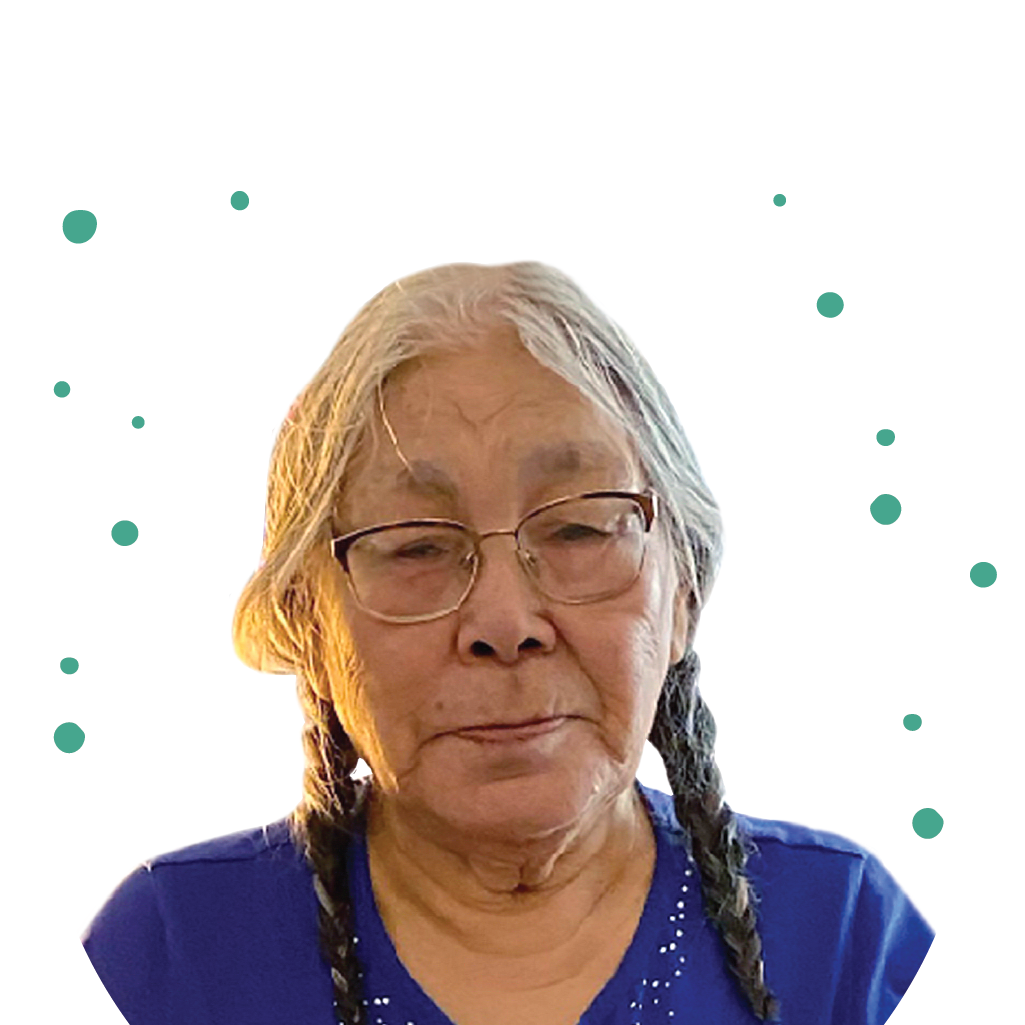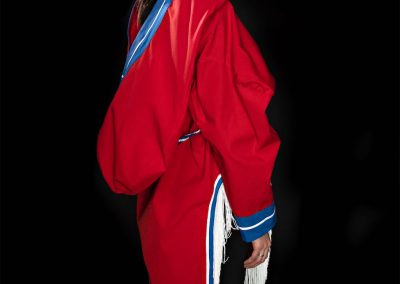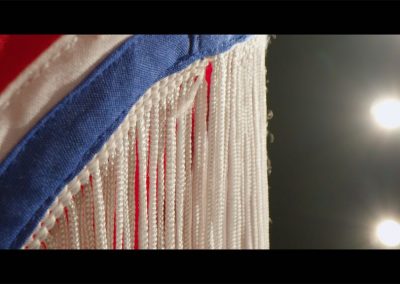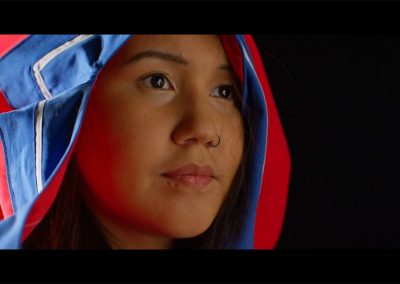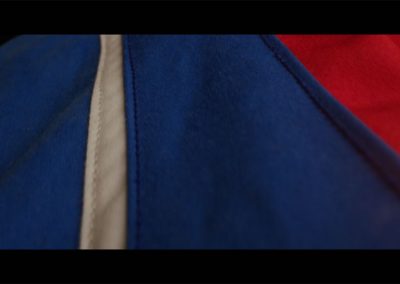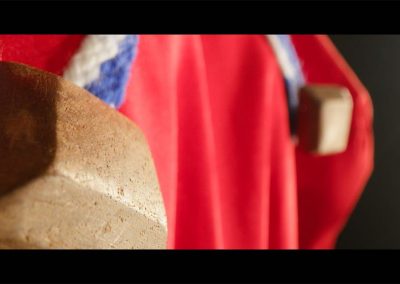About Nancy’s Design
The Red Amautiit should represent some easing of the bereavement that everyone goes through. It should represent the condolence of those who have lost a loved one. The Red Amautiit is for Canada to remember and recognize those lost loved ones, but it also should be directed to the rest of the world. In addition to that, this Amauti was the only clothing women had to use.
The pattern that I used is one that we have had as inland Inuit since time immemorial. It is the first style and pattern that I ever saw and grew up with. We did not know about other Inuit women’s Amauti patterns, as we were inland Inuit, so we would not have seen or known the coastal and other region’s styles of Amautiit. It has the frills, the hanging tailored patterns in both the front and back as well as the hood part for carrying the baby.
All over the world, in each community, we have lost a loved one. They did not return to us. We were taught by elders to not worry too much, to be brave, resilient and to try to live without too much stress for our own mental health and well-being. The Red Amauti demonstrates that our blood gives us life, the will to live a better life and that resilience is prominent in our lives.
About Nancy
I was born on April 28, 1948 at a place called Aaruannuaq. That is located near Gjoa Haven and between that and the Back River area. In our Iglu camps (on the land), our tuktu clothing was made in a way that needed proper cleaning and scraping so that they were soft and prepared properly. I expressed that I wanted an Atigi as I was envious of others who had that kind of clothing. Though I don’t know how old I was, I was told that I would have to prepare the skin myself (clean, scrape and soften) in order to have one. I put the tuktu fur against my skin and went to sleep. In the morning, I was told to remove it, so I did and found it was very cold without the fur side against my skin. I was then told that the scraping of the skin (inside part of the tuktu) had to take place, using some water to help soften it along the way. Then, Uunaq (my mother) demonstrated by cutting out the pattern of half the tuktu skin. I was to do the other half as shown. I think I was under 10 years old at the time. That was the first Atigi that I ever made, and I have not forgotten that ever, as I was afraid that I might make a mistake; that I might not cut the pattern properly. I believe I was being helped along the way in that method of teaching.
As the camps were being built, we would wait and help one of our eldest sisters as she would have to prepare and sew clothing for others. My older sisters, Juusippik, Nanurluk, Qablunaaq and myself, would be told to help the eldest sister. I would listen most of the time. I helped to make my brother-in-law Kajuruk’s long tuktu socks (duffles). When they came back from making camp, my brother-in-law told me that the sewing that I had done did not fray. It was intact. That’s how I was taught how to sew.
Often, the soles of our kamiik would wear out. During one blizzard where we had to stay inside the iglu, it was noticed that my kamiik had worn-out soles. I was told that I used my kamiik for sliding so much that the soles were worn out. That being the case, I was told to replace the soles of my own kamiik. It was hard! I was probably nine years old at the time when I replaced the soles of my kamiik. I would make mistakes in the cutting of the pattern and stitching so I would cry. Even though I cried, I had no help. I was taught how to sew that way. I did not grow up being ignored and mistreated as I thought I was at that time. Instead, I was being taught the proper way to sew for my own benefit. It became apparent to me that it was proper, helpful and setting the path for my sewing, so I appreciate that now.
